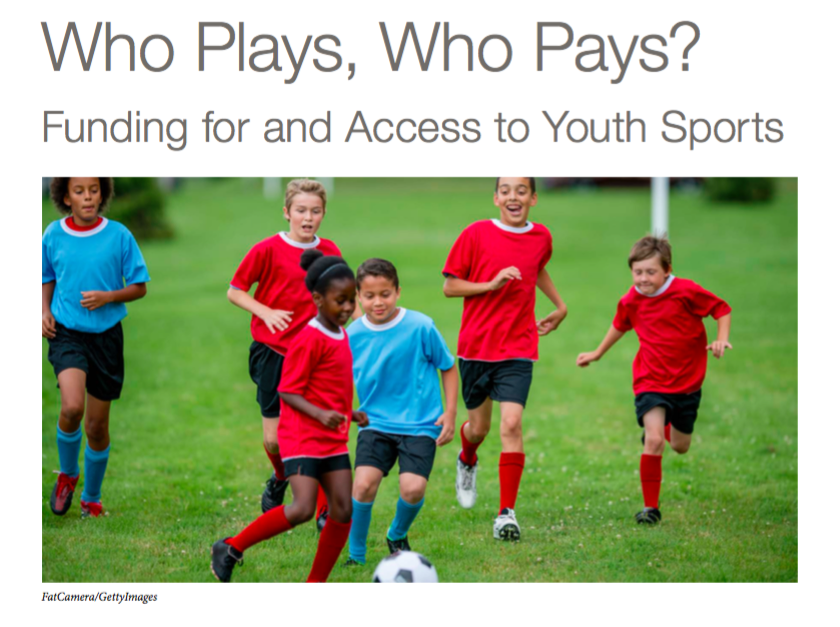
RAND
.
Does the cost of sports keep low-income kids from playing?
Yes, said a recent RAND report.
It recommended that community-based organizations cover or at least lower the out-of-pocket costs for low-income families and that private foundations pitch in for sports equipment expenses.
It also recommended that local and state governments step up to share parks and sports fields with community organizations and with schools that don’t have such facilities.
The report “Who Plays, Who Pays: Funding for and Access to Youth Sports,” focused on middle and high school students and was based on surveys of parents, school administrators and community sports organizations ranging from Little League to the YMCA. It was commissioned by DICK’S Sporting Goods.
“What we see is a gap in participation,” said Anamarie Whitaker, policy researcher at the RAND Corporation and lead author of the report.
Two-thirds of families surveyed who earned $75,000 or more reported their child took part in sports, but only 52% of families earning less than $50,000 said their kids took part, according to the report. Also, schools in low-income areas are less likely to offer sports, according to a recent report by the Women Sports Foundation.
The biggest barrier that low-income parents listed was cost, according to the RAND report. Parents also said the time commitment could be a problem.
Parents in that report put the annual cost of sports in a range from $100 to $500.
“We find that sports costs are going up. Fees for parents are going up,” Whitaker said.
Most school sports budgets had not increased, but participation fees had risen, the RAND survey showed.
It recommended that community sports organizations pay attention to the gap.
“When possible, help with reducing fees for low-income families and potentially help with some of the other associated costs such as transportation,” Whitaker said. “We do recommend that organizations look at the parent time commitment.”
The report noted that schools and community sports organizations can find it hard to meet the cost of sports programs. It said 57% of parents whose kids played sports took part in some type of fund-raising activity.
Although the study did not use a nationally representative sample, the participation gap found was similar to that in other earlier research, Whitaker said.
She also recommended that more rigorous research be done to understand which aspects of sports — teamwork, physical activity, etc. — are linked to positive youth outcomes.































